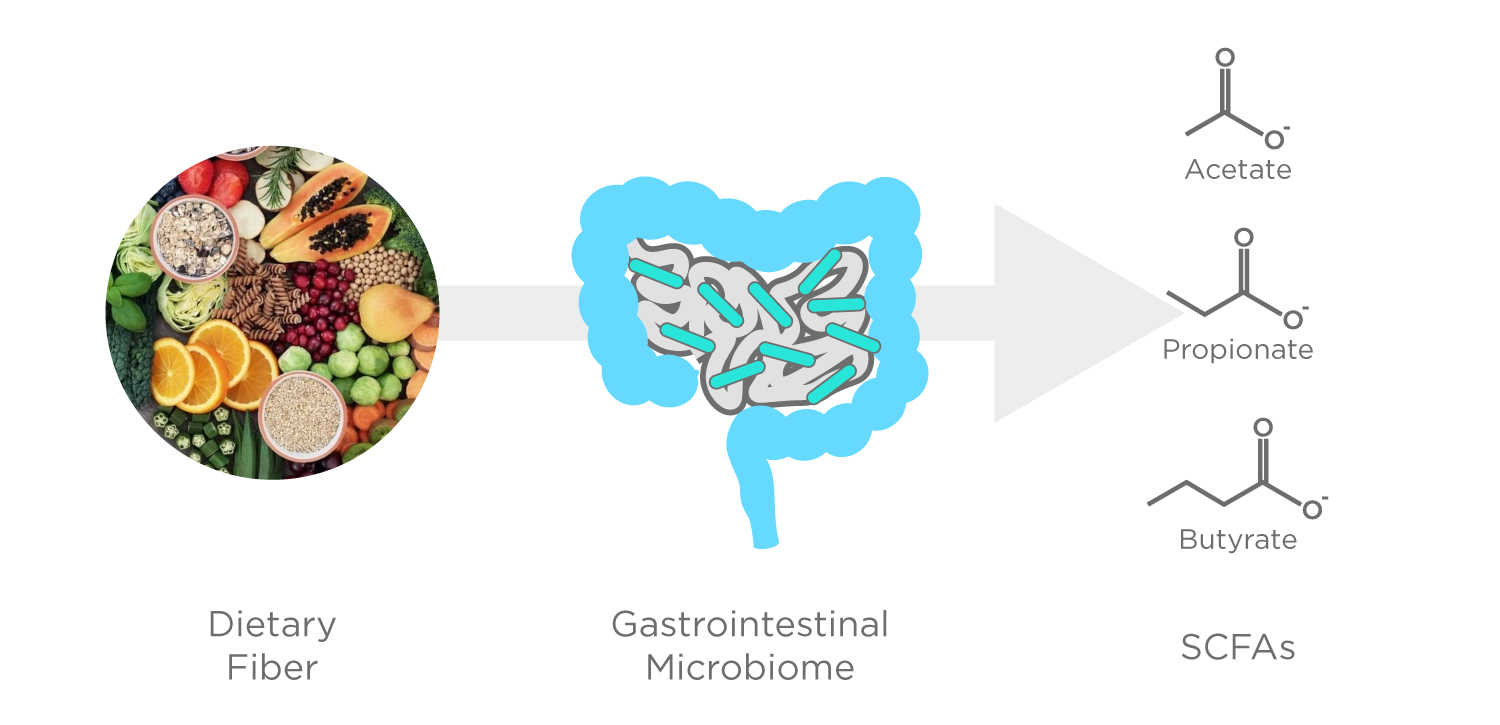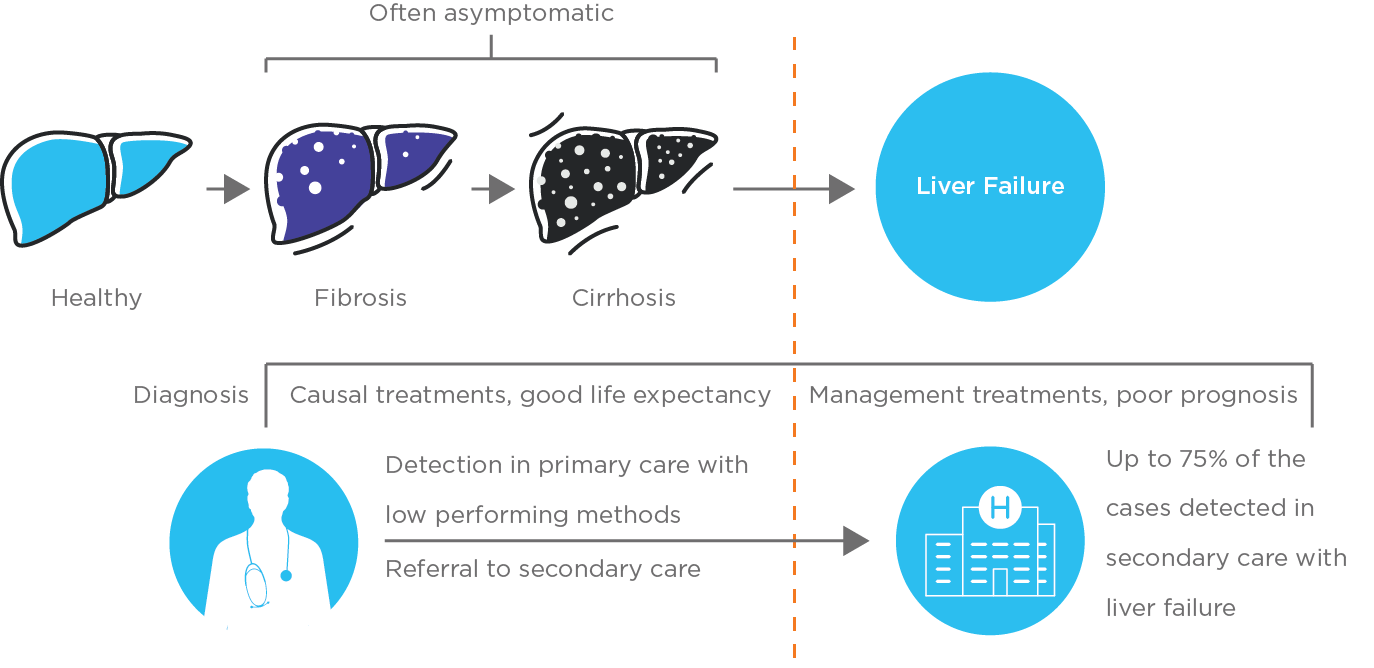Case studies where breath analysis has been successfully used.
Published on: 7 Jul 2023
In the final installment of this blog, we will cover case studies of breath analysis used in:
- Cancer
- Liver disease
- The microbiome
Our introductory blog series has focused on why breath can be used as a unique biological sample for biomarker analysis, what compounds are found in the breath, what processes the volatile compounds originate from, and how they can be analyzed. The final blog in this series will run through three major case studies where breath biomarker analysis has been used, and where breath has the great potential to transform biomarker analysis. This will highlight what disease areas breath can be utilized within and give some scope to the breadth of potential applications of breath.
Cancer
According to the World Health Organization, all cancers were collectively responsible for an estimated 10 million deaths in 2020 (1), placing it as one of the leading causes of death. We began our mission to identify better ways to detect cancer earlier when the chances of treatment being successful are significantly higher. As we have discussed throughout this series, a vast array of chemicals in exhaled breath originate from deeper within the body and some of these may indicate the presence of cancer long before any symptoms may show.
Lung cancer is one of the leading causes of cancer-related death worldwide, partly due to the difficulty in early diagnosis. Widespread screening programs for lung cancer, especially targeting at-risk populations, represent one of the best opportunities to improve early detection and lung cancer survival. Owlstone Medical is running one of the largest breath lung cancer clinical trials, ‘Evolution’.
In the Evolution study, we are testing whether we can administer an EVOC probe as previously described that specifically targets β-glucuronidase, an enzyme that is usually contained within the cells. Due to the leaky tissues in cancer subjects, β-glucuronidase activity could be found outside of the cells. Our approach involves introducing a hydrophilic non-cell permeable substrate probe D5-ethyl-βD-glucuronide (D5-EtGlu) that upon contacting the β-glucuronidase enzyme releases D5-ethanol, a unique volatile reporter that can be measured in exhaled breath.
This provides a readout of tumor-associated enzyme activity using breath analysis, thereby identifying the presence of cancer. Dr. Mariana Leal, a Lead Translational Scientist here at Owlstone provided an update to our work on lung cancer with News Medical, highlighting our progress and future work.
Liver disease
While 90% of liver disease is preventable, the progression of liver disease is often not accompanied by any symptoms, resulting in most cases being diagnosed at advanced stages. This is concerning, as the later the diagnosis, the more likely it is that irreversible damage has accumulated, with reports of up to 75% of patients receiving a diagnosis of cirrhosis (scarring of the liver) only upon liver failure (2). The detection of early stages of liver disease, such as non-alcoholic fatty liver disease (NAFLD), and non-alcoholic steatohepatitis (NASH), represents a significant clinical challenge. Currently, invasive tissue biopsy is still the gold standard for diagnosis and monitoring, the development of a breath test would enable non-invasive early liver disease detection.
We have shown that limonene can be used to assess liver function through its metabolism by the CYP450 enzymes, offering an alternative to liver biopsies for diagnosing cirrhosis and earlier-stage liver disease (3,4). Further analysis has shown that 29 volatile compounds were significantly different between people with cirrhosis vs controls (4), with the top four performing compounds for differentiating these groups being 2-pentanone, eucalyptol, limonene, and dimethyl selenide. Interestingly, these compounds correlated with blood metrics of liver function, and their combination in a classification model provided a better classification performance than any one compound individually.
In a coincidence, a subsequent liver disease trial showed that the breath test was incredibly accurate, even to the point of detecting the presence of liver damage in someone who in fact had liver disease but was misassigned to the healthy control cohort. Breath testing for liver disease is therefore one of the most promising areas where breath analysis can illuminate a clear path toward a diagnostic and monitoring tool for significant clinical benefit.
The Microbiome
The discovery that the human body is colonized by microbial species of bacteria, fungi, and archaea – known collectively as the microbiota, or the microbiome – is transforming how we think about the processes behind health and disease and is a field of growing interest across biomedical science. This community of microbes has been linked to the pathophysiology of many diseases, particularly gastrointestinal diseases as the microbial community in the gut is one of the most diverse and richest on the planet (5).
Gastrointestinal diseases such as irritable bowel syndrome (IBS), and inflammatory bowel disease (IBD) can cause life-limiting discomfort, and delays in receiving a diagnosis are high. An analysis of those diagnosed with IBD between 1998-2016 revealed that shockingly, 10% of patients visited their doctor with symptoms five years before being diagnosed, and fewer than half of those suffering from consistent symptoms saw a specialist within 18 months (6). The major symptom overlap between gastrointestinal diseases means they are tricky to accurately distinguish without the use of more invasive tests, which are time-consuming and difficult to tolerate. However, there is a delicate balance to strike, as delays to treatment can be detrimental to the prognosis of more serious diseases such as colorectal cancer (CRC).
Short-chain fatty acids (SCFAs) are a class of volatile chemical compounds, that are products of the gut microbiota strongly linked to the development of gastrointestinal diseases, including IBS, IBD, and CRC (7–9). Several SCFAs: acetic acid, butyric acid, propionic acid, isobutyric acid, 2-methylbutanoic acid, and isovaleric acid are contained within our Breath Biopsy VOC Atlas, a catalog of VOCs that are detectable in exhaled breath and reliably distinguished from background signal. The time between the production of a volatile compound in the gut and its detection in the breath is approximately five minutes or less based on measurements of gut microbial-produced hydrogen gas (10). Therefore, endogenously produced compounds detected in the breath can provide a real-time window into microbial metabolism ongoing in the gastrointestinal tract, a vital angle for studying gastrointestinal diseases.

As SCFAs are products of the fermentation of dietary compounds, there is evidence to suggest that in many cases it may be possible to reverse the negative effects of unbalanced levels of SCFAs through simple changes in diet (9,11). The efficacy of such an intervention could then also be assessed through ongoing monitoring of non-invasive breath samples. If successful, this approach has the potential to improve the quality of life for many people by reducing the risk of developing gastrointestinal diseases, and potentially reducing the severity of such conditions leading to symptom alleviation.
Conclusion
Our overall mission is to save 100,000 lives and $1.5B in healthcare costs, and we envision Owlstone Medical as the global leader in Breath Biopsy for early detection and precision medicine. Although we began our mission to fight cancer, we have now realized that breath biomarkers have the potential to improve diagnostic tests and monitoring technology for clinical trials in a range of diseases, as well as to investigate the impacts that the microbiome has on our health. Ultimately, we believe that breath analysis is promising, and can revolutionize how we diagnose and monitor disease and drug effects. Therefore, we hope to cut a path toward wider adoption of breath analysis technology for clinical applications.
Analysis of volatile compounds in exhaled breath, or those emitted from in vitro samples can an incorporated in a variety of innovative ways in your research. If you are interested in finding out how you could incorporate breath analysis in your research, please do not hesitate to contact us.
References
- Cancer [Internet]. [cited 2023 Apr 19]. Available from: https://www.who.int/news-room/fact-sheets/detail/cancer
- Labenz C, Arslanow A, Nguyen-Tat M, Nagel M, Wörns MA, Reichert MC, et al. Structured Early detection of Asymptomatic Liver Cirrhosis: Results of the population-based liver screening program SEAL. J Hepatol. 2022 Sep;77(3):695–701. DOI: 10.1016/j.jhep.2022.04.009
- Ferrandino G, Orf I, Smith R, Calcagno M, Thind AK, Debiram-Beecham I, et al. Breath Biopsy Assessment of Liver Disease Using an Exogenous Volatile Organic Compound—Toward Improved Detection of Liver Impairment. Clinical and Translational Gastroenterology. 2020 Sep;11(9):e00239. DOI: 10.14309/ctg.0000000000000239
- Ferrandino G, De Palo G, Murgia A, Birch O, Tawfike A, Smith R, et al. Breath Biopsy® to Identify Exhaled Volatile Organic Compounds Biomarkers for Liver Cirrhosis Detection. Journal of Clinical and Translational Hepatology. 2023 Jun 28;11(3):638–48. DOI: 10.14218/JCTH.2022.00309
- Cronin P, Joyce SA, O’Toole PW, O’Connor EM. Dietary Fibre Modulates the Gut Microbiota. Nutrients. 2021 May 13;13(5):1655. DOI: 10.3390/nu13051655
- Blackwell J, Saxena S, Jayasooriya N, Bottle A, Petersen I, Hotopf M, et al. Prevalence and Duration of Gastrointestinal Symptoms Before Diagnosis of Inflammatory Bowel Disease and Predictors of Timely Specialist Review: A Population-Based Study. Journal of Crohn’s and Colitis. 2021 Feb 1;15(2):203–11. DOI: 10.1093/ecco-jcc/jjaa146
- Ríos-Covián D, Ruas-Madiedo P, Margolles A, Gueimonde M, de los Reyes-Gavilán CG, Salazar N. Intestinal Short Chain Fatty Acids and their Link with Diet and Human Health. Front Microbiol. 2016 Feb 17;7:185. DOI: 10.3389/fmicb.2016.00185
- Mirzaei R, Afaghi A, Babakhani S, Sohrabi MR, Hosseini-Fard SR, Babolhavaeji K, et al. Role of microbiota-derived short-chain fatty acids in cancer development and prevention. Biomedicine & Pharmacotherapy. 2021 Jul 1;139:111619. DOI: 10.1016/j.biopha.2021.111619
- Parada Venegas D, De la Fuente MK, Landskron G, González MJ, Quera R, Dijkstra G, Harmsen HJ, Faber KN, Hermoso MA. Short chain fatty acids (SCFAs)-mediated gut epithelial and immune regulation and its relevance for inflammatory bowel diseases. Frontiers in immunology. 2019:277. DOI: 10.3389/fimmu.2019.00277
- Read NW, Al-Janabi MN, Bates TE, Holgate AM, Cann PA, Kinsman RI, et al. Interpretation of the breath hydrogen profile obtained after ingesting a solid meal containing unabsorbable carbohydrate. Gut. 1985 Aug;26(8):834–42. DOI: 10.1136/gut.26.8.834
- Lee JH, Zhu J. Analyses of short-chain fatty acids and exhaled breath volatiles in dietary intervention trials for metabolic diseases. Experimental Biology and Medicine. 2021 Apr;246(7):778-89. DOI: 10.1177/1535370220979952


